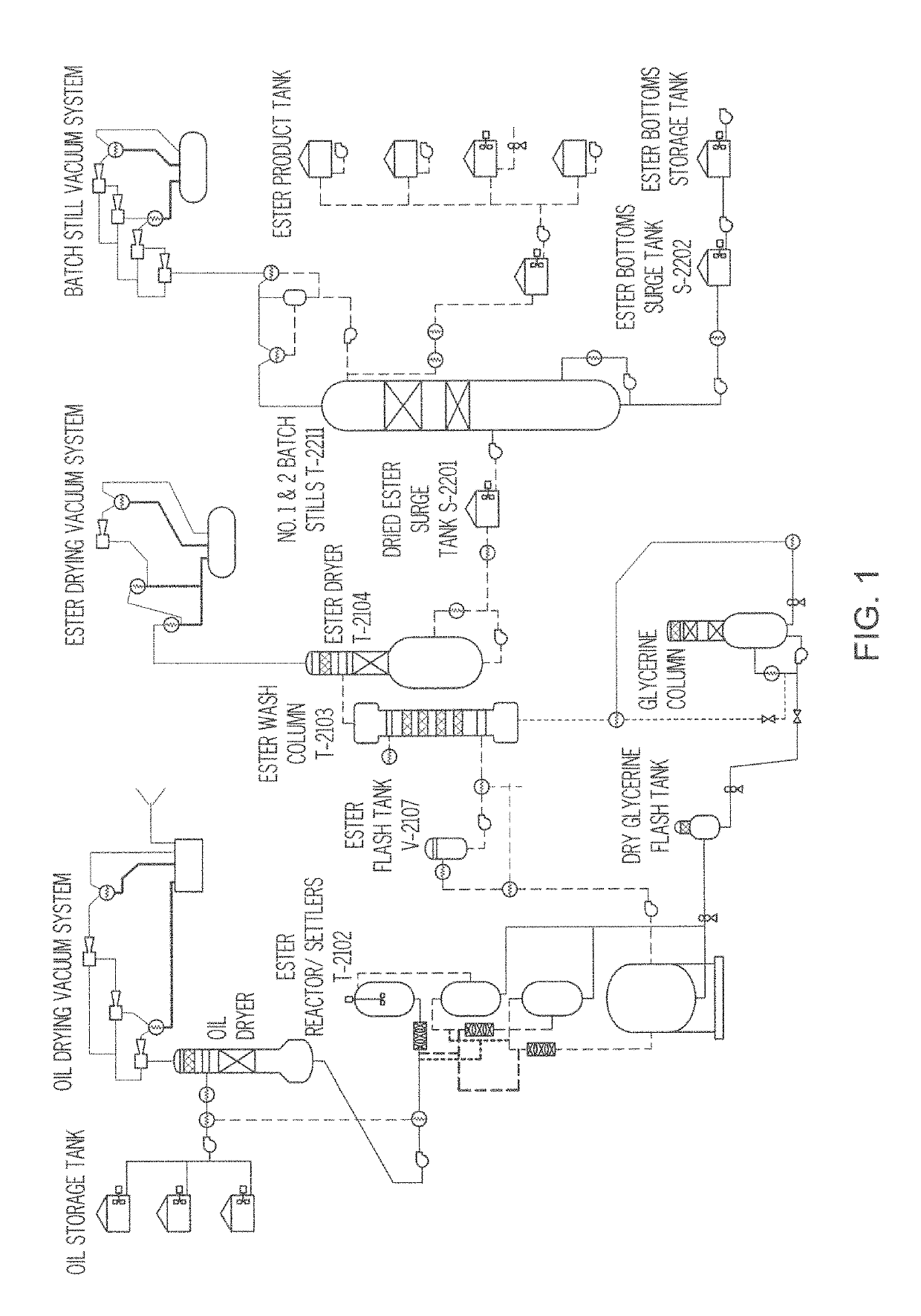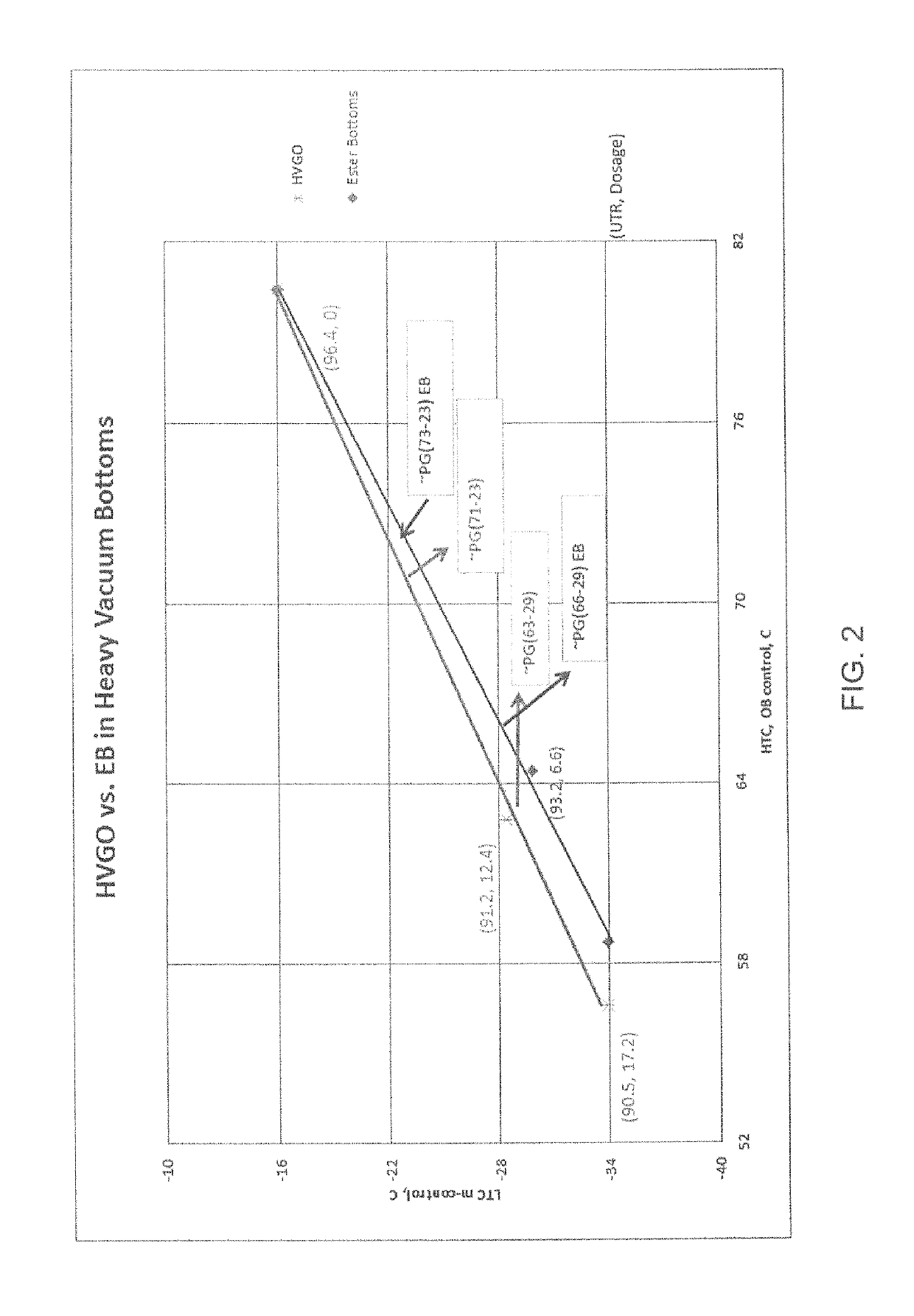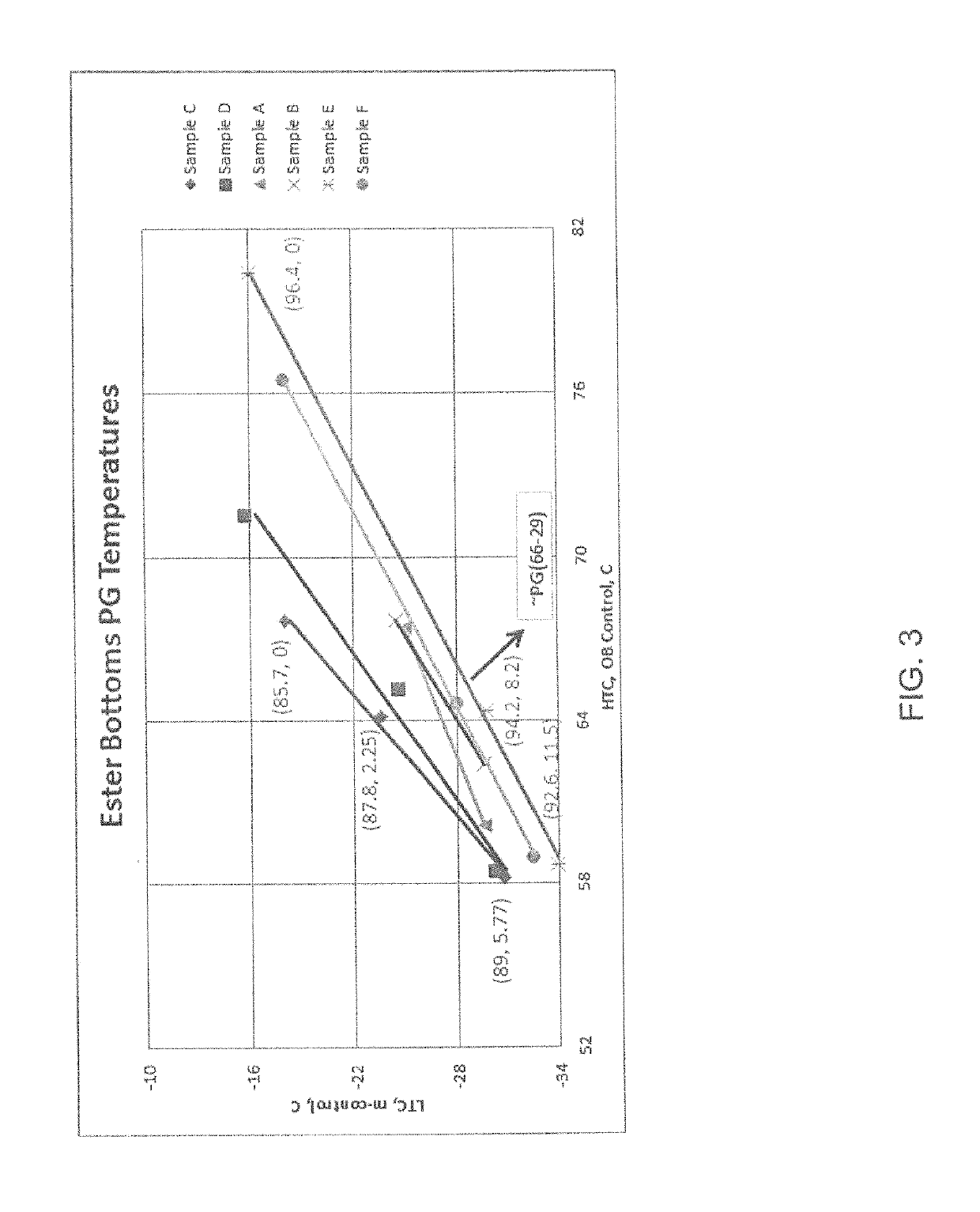Method of making an asphalt composition containing ester bottoms
- Summary
- Abstract
- Description
- Claims
- Application Information
AI Technical Summary
Benefits of technology
Problems solved by technology
Method used
Image
Examples
example 1
[0036]Referring now to FIG. 4 a conventional PG 64-22 (Sample A) is used. The control sample at high temperature is approximately 65° C., and the low temperature compliance is actually −25° C. Ester bottoms are added to the Sample A and the resulting product has a high temperature compliance of 60.1° C. and a low temperature compliance of −29.6° C. The useable temperature range of the control equals 86° C. whereas the ester modified composition has a useable temperature range of 89.7° C.
example 2
[0037]Referring to FIG. 4, Sample B PG 64-22 has an initial high temperature control of 67.7° C. and the low temperature control is −24.6° C. resulting in a UTR of 92.3. After the addition of 3% ester bottoms the high temperature compliance is 62.4° C. and the low temperature compliance is −29.9° C. resulting in a useable temperature range of 93.2° C., while lowering the lower temperature compliance significantly.
example 3
[0038]Referring again to FIG. 4, Samples C & D, SOA blends, were tested. Sample C having a high temperature compliance of 67.7° C. and a low temperature compliance of −18° C. Ester bottoms were added in the amount of 2.25% and 5.77%. The 2.25% ester bottoms addition resulted in a UTR of 87.8° C., while the 5.77% ester bottoms addition resulted in a UTR 89° C. In the Sample D test the 3.70% ester bottoms addition resulted in an 89.8° C. UTR and a 7.1% ester bottoms addition resulted in an 88.8° C. UTR.
[0039]It can be seen from FIGS. 2-4 that ester bottoms modified asphalts are at least as good as, if not better at maintaining a UTR than the more expensive HVGO and SDA modified asphalts.
[0040]Referring now to FIG. 5, tensile strength testing was employed against three SDA modified binders (1, 2, 3) in comparison with an ester bottoms modified binder (4). Moisture sensitivity results for the three SDA modified PG64-22 asphalts and the ester bottoms modified blend show that the ester bo...
PUM
| Property | Measurement | Unit |
|---|---|---|
| Temperature | aaaaa | aaaaa |
| Temperature | aaaaa | aaaaa |
| Viscosity | aaaaa | aaaaa |
Abstract
Description
Claims
Application Information
 Login to View More
Login to View More - R&D
- Intellectual Property
- Life Sciences
- Materials
- Tech Scout
- Unparalleled Data Quality
- Higher Quality Content
- 60% Fewer Hallucinations
Browse by: Latest US Patents, China's latest patents, Technical Efficacy Thesaurus, Application Domain, Technology Topic, Popular Technical Reports.
© 2025 PatSnap. All rights reserved.Legal|Privacy policy|Modern Slavery Act Transparency Statement|Sitemap|About US| Contact US: help@patsnap.com



